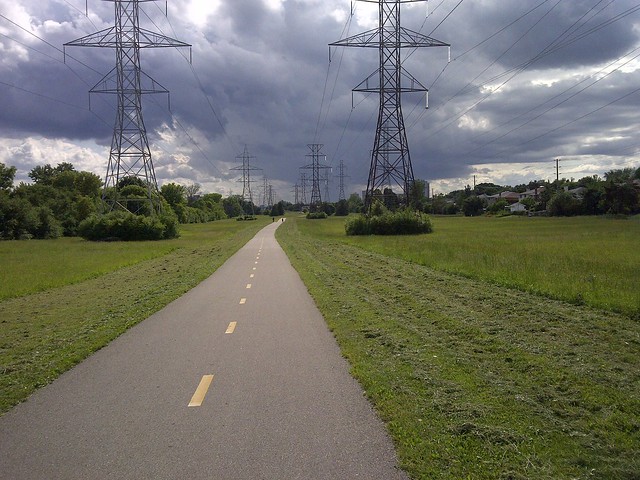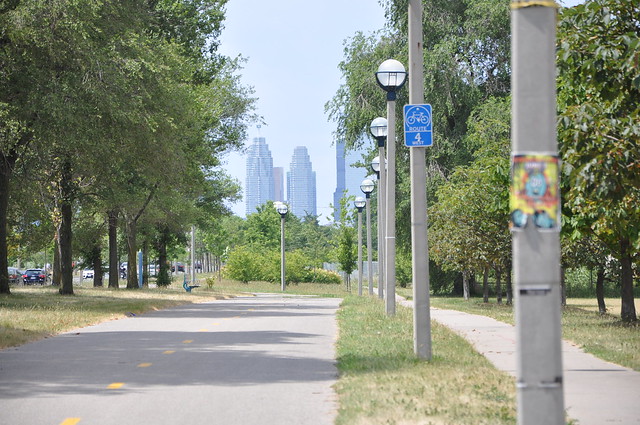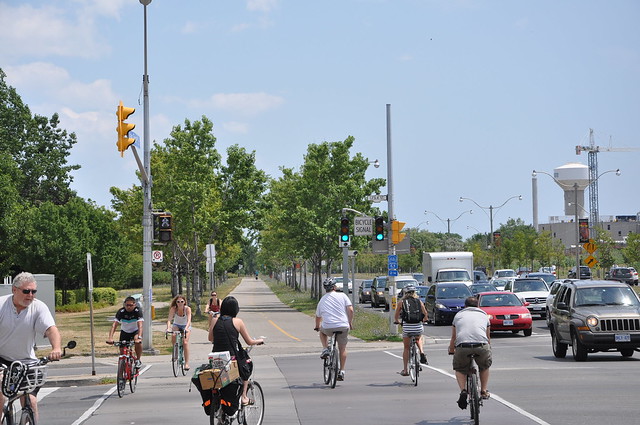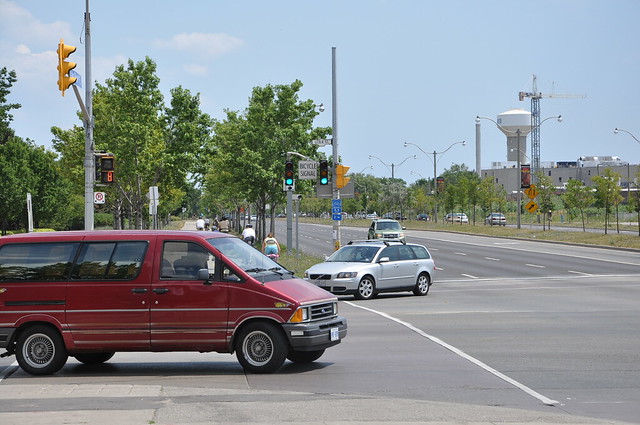steveintoronto
Superstar
I've got to agree completely. If your intent is to get from one location to another, and 'fly' doing it, dedicated trails, especially Rail Trails are the way to do it, albeit you can also take your time. This is why I differentiate between 'municipal bike paths' and actual 'trails'. It does not follow that on actual trails you don't observe all rules of etiquette and safety, you must...and also common sense for your own well-being, like carrying water, maps (I also carry a compass and tools, spare tube and folded tire) insecticide and perhaps sun-block. They don't weigh that much, but are insurance against eventualities.Just because it looks nice on a map doesn't mean it's useful in any way. I'm not a fan of the multiuse paths next to streets since I usually bike at 30km/h+ and those paths are very dangerous at intersections when going at those speeds. When riding from Northwest Brampton, I usually end up just using Kennedy and then Matheson to get into Toronto.
One of my greatest beefs with the much touted route along the Lakeshore (I forget what it's called now) is that it meanders and is slow speed. Some back roads and almost all Rail Trails, you can make incredible time on by sustaining a pace, something you can't do on park paths. And I'm going to state something anathema to my own expressed love for trails.
I state this with provisos, but I agree completely, as much as I hate dealing with cars, sometimes better the devil you know than the one you don't. 2000 nails it. As odd as it must sound, there's much greater *predictability* dealing with cars than other urban cyclists, or on paths that continually intersect roads with drivers turning. When there's a bike lane on a road next to a busy bike path adjacent (as occurs a lot on the Lakeshore path around the Exhibition) I take the road.Just because it looks nice on a map doesn't mean it's useful in any way. I'm not a fan of the multiuse paths next to streets since I usually bike at 30km/h+ and those paths are very dangerous at intersections when going at those speeds. When riding from Northwest Brampton, I usually end up just using Kennedy and then Matheson to get into Toronto.
That being said, I'll take the Rail Trails out of town any day! (And some very quiet back roads). There's very few ways to safely cycle out/into Toronto. Which means taking GO to where the safe roads/trails start.
Last edited:









